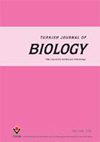纳米材料混合物:生物胶体
IF 0.9
4区 生物学
Q3 BIOLOGY
引用次数: 4
摘要
由于纳米材料独特的固有特性,基于纳米材料的诊断在灵敏度、特异性和便携性方面比其他传统诊断系统具有巨大优势。因此,迫切需要开发和使用广泛的纳米材料用于生物和诊断应用。在这篇综述中,我们重点关注纳米材料辅助疾病诊断,利用不同的技术,如光致发光、比色法、荧光、电化学、微阵列方法、表面等离子体共振和表面增强拉曼光谱。在这些技术中,根据其通用的化学和物理特性,使用了不同的纳米材料,包括但不限于金和银材料、金属氧化物和半导体。随着纳米材料的新特性被发现,它们对纳米生物技术应用的贡献大大增加。本文根据最新研究综述了所选纳米生物材料、生物标签修饰纳米材料的特点及其在检测特定生物靶标方面的突出应用。纳米材料特别有助于光/化学疗法和生物医学成像领域,因为所有的生物事件都发生在这个尺寸范围内,并且由于其独特的物理和化学性质,纳米颗粒在生物医学应用中的受益作用数不胜数。然而,由于特异性和选择性的必要性,研究NP的生物偶联以提高靶向生物应用的效率是一个明确的目标。因此,生物杂交NP的特异性和固有特性的结合促进了诊断和治疗应用。本文章由计算机程序翻译,如有差异,请以英文原文为准。
Hybrid nanomaterial: biocolloidals
Nanomaterials-based diagnostics have tremendous advantages over other conventional diagnostic systems in terms of sensitivity, specificity, and portability owing to the unique intrinsic properties of nanomaterials. Thus, there is a substantial need to develop and employ a broad spectrum of nanomaterials for biological and diagnostic applications. In this review, we focus on nanomaterials-assisted disease diagnosis utilizing different techniques such as photoluminescence, colorimetry, fluorescence, electrochemistry, microarray methods, surface plasmon resonance, and surface-enhanced Raman spectroscopy. In these techniques, different nanomaterials, including but not limited to gold and silver materials, metal oxides, and semiconductors, were employed according to their all-purpose chemical and physical properties. As the new properties of nanomaterials are discovered, their contributions to nanobiotechnology applications are vastly increased. In this review, the features of the selected nanobiomaterials, biological tag-modified nanomaterials, and their outstanding applications for the detection of specific biotargets have been summarized according to the latest studies. Nanomaterials contribute to the fields of photo/chemotherapy and biomedical imaging in particular, since all the biological events happen within this size range and beneficiary roles of nanoparticles (NPs) are countless in biomedical applications due to their unique physical and chemical properties. However, due to the necessity of specificity and selectivity, there is a clear ambition to study bioconjugation of NPs to increase the efficiency of the targeted biological applications. Thus, the combination of the specificity and the intrinsic properties of biohybrid NPs facilitate diagnostic and therapeutic applications.
求助全文
通过发布文献求助,成功后即可免费获取论文全文。
去求助
来源期刊

Turkish Journal of Biology
BIOLOGY-
CiteScore
4.60
自引率
0.00%
发文量
20
审稿时长
6-12 weeks
期刊介绍:
The Turkish Journal of Biology is published electronically 6 times a year by the Scientific and Technological
Research Council of Turkey (TÜBİTAK) and accepts English-language manuscripts concerning all kinds of biological
processes including biochemistry and biosynthesis, physiology and metabolism, molecular genetics, molecular biology,
genomics, proteomics, molecular farming, biotechnology/genetic transformation, nanobiotechnology, bioinformatics
and systems biology, cell and developmental biology, stem cell biology, and reproductive biology. Contribution is open
to researchers of all nationalities.
 求助内容:
求助内容: 应助结果提醒方式:
应助结果提醒方式:


